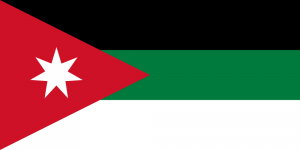Language/North-levantine-arabic/Grammar/Nouns
Hi North Levantine Arabic learners! 😊
In this lesson, we will dive into the world of North Levantine Arabic nouns. The basics of (Arabic) nouns in North Levantine Arabic involve understanding the concepts of gender, number, and definite/indefinite status.
Introduction[edit | edit source]
North Levantine Arabic nouns are essential for constructing any sentence. Understanding their morphology and syntax is key to mastering the language. Like any other language, in North Levantine Arabic, a noun is a person, place, thing, or idea.
In Arabic, a noun can be masculine or feminine, and the gender of the noun affects the forms of other words in the same sentence. In addition, a noun can be singular or plural, and it can be definite or indefinite.
Before we dive into the details, let's look at some cultural information about North Levantine Arabic nouns. In North Levantine Arabic-speaking countries, nouns are a crucial component of traditional cuisine. Each dish has a unique name, and different ingredients' names are essential to understand the recipe. For instance, “Hummus" (حمص) is a popular Middle Eastern dish made of chickpeas; it's essential to know how to identify the noun “Hummus" (حمص) if you plan to order it at a restaurant or make it at home.
After mastering this lesson, these related pages might interest you: Pronouns, How to Use "Have" & Negation.
Gender[edit | edit source]
In North Levantine Arabic, all nouns have gender. A noun can be masculine or feminine. The gender of a noun must match the gender of modified adjectives, verbs, and pronouns. The following table shows some examples of nouns with their gender.
| Nouns | Gender | English |
|---|---|---|
| وَلَد | masculine | boy |
| بنْت | feminine | girl |
| جدار | masculine | wall |
| باب | masculine | door |
| تفاحة | feminine | apple |
In the above example, "boy" (ولد) is masculine, and "girl" (بنت) is feminine. Notice how the adjective "old" (كبير) changes its ending to match with the gender of the noun.
For example:
- "The old boy" (الولد الكبير): ٱلْـ + وَلَدٌ + ٱلْـكَبِيرُ
- "The old girl" (البنت الكبيرة): ٱلْـ + بِنْتٌ + ٱلْـكَبِيرَةُ
Number[edit | edit source]
In North Levantine Arabic, nouns come in two numbers: singular and plural. The following table shows some examples of singular and plural nouns with their corresponding translation:
| Singular | Plural | Translation |
|---|---|---|
| كِتاب | كُتُب | book(s) |
| طالِب | طُلّاب | student(s) |
| مَدْرَسَة | مَدارِس | school(s) |
Forming a plural noun in North Levantine Arabic is relatively easy.
- For masculine nouns: add ـينَ to the singular noun.
- For feminine nouns: add ـات to the singular noun.
For example:
- Car (سيارة): singular
- Cars (سيارتين): plural
Notice how the noun "car" changes the ن to ين to form the plural.
Definite and Indefinite Status[edit | edit source]
Another essential aspect of North Levantine Arabic nouns is their definite and indefinite status. Definite refers to a specific noun, while indefinite refers to a noun in general.
In North Levantine Arabic, the definite status is indicated by Al (ال).
For example:
- A house (منزل): indefinite
- The house (المنزل): definite
In North Levantine Arabic, the definite article "al" (ال) is added to the beginning of a noun to specify that it is definite. When added to the noun, it changes the pronunciation.
For example:
- Paper (ورق)
- The paper (الورق)
Dialogue[edit | edit source]
- Person 1: هل عندك القلم؟ (Hal ʿindak al qalam?) (Do you have the pen?)
- Person 2: نعم، عندي القلم. (Naʿam, ʿindī al-qalam) (Yes, I have the pen.)
- Person 1: أين القلم الأحمر؟ (Ayna al qalam al-ahmar?) (Where is the red pen?)
- Person 2: القلم الأحمر على المكتب. (Alqalam al-ahmar ʿalā almaktub) (The red pen is on the desk.)
Conclusion[edit | edit source]
In conclusion, we've learned about North Levantine Arabic nouns' gender, number, definite and indefinite status, and their cultural importance. Understanding the grammar of North Levantine Arabic nouns is a crucial component of fluently speaking and reading the language.
Don't forget, to improve your North Levantine Arabic Grammar, you can also use the Polyglot Club website. Find native speakers and ask them any questions!
Feel free to explore other [Language/North-levantine-arabic/Grammar|grammar] lessons on our [Language/North-levantine-arabic|North Levantine Arabic] page.
Sources[edit | edit source]
Now that you've completed this lesson, don't stop learning! Check out these related topics: Questions, Gender & Adjectives.
Other Lessons[edit | edit source]
- How to Use Be
- Adjectives
- How to Use Have
- Future Tense
- Pronouns
- Conditional Mood
- Gender
- Give your Opinion
- Negation
- Questions

